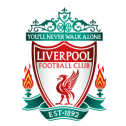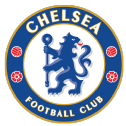Earlier this week, I investigated a simple premise: that the most consistently awesome teams in European soccer are less awesome this season. Of the top teams in the UEFA coefficient rankings — a.k.a. the teams that have enjoyed the most consistent success in European competitions — a majority have regressed this season.
This has opened the door for a number of underdog stories of varying degrees: Arsenal having a good shot at their first Premier League title in 19 years; Napoli cruising to a first Serie A title in 33 years and having solid odds of winning the Champions League too; upstarts like Brighton and Union Berlin challenging for top-four finishes and their first appearance in the Champions League, etc.
– Stream on ESPN+: LaLiga, Bundesliga, more (U.S.)
Whatever the reasons for this regression, however, we know one thing for sure: the big clubs will respond, likely with force. They always do. But before we find out who they sign (or hire!) in an effort to regain what was lost, let’s look at how some of the sport’s most powerful teams indeed regressed.
There have been plenty of disappointing and/or confusing big-club performances this season — safe to say, PSG and Tottenham Hotspur just added their names to that list after bowing out in the Champions League round of 16 this week — but let’s focus on six specific teams: Manchester City, Real Madrid, Liverpool, Chelsea, Juventus and Ajax have all (a) accomplished enough in recent years to rank top 10 in the UEFA club coefficients but (b) seen their Elo ratings fall this season.
What has been the primary source of their respective regression? What are the biggest deficiencies they must address?

Current SPI ranking: 2
Current EloFootball ranking: 2 (end of last year: 2)
Most likely league finish, per SPI: 2nd
Biggest source of regression: Opponents are taking far more shots.
Per SPI, regression is in the eye of the beholder. Pep Guardiola’s squad still has a 44% chance of winning the Premier League and boasts the second-best odds (20%) of winning the Champions League. This hasn’t exactly been a nightmare season at the Etihad. But after winning four league titles in the past five seasons, the fact that City is not the league favorite at the moment is certainly a sign of at least slight drop-off.
City has produced extremely similar scoring output in the Premier League in 2022-23 — 2.6 goals per game last year; 2.5 this year — and while it is doing so with lower xG production (fallen from 2.6 per match to 2.1 in that regard), new addition Erling Haaland has been one of the world’s better finishers in recent seasons, and that makes up quite a bit of difference. It’s hard to worry much about the attack, even if adding Haaland didn’t actually make it better.
The defense, on the other hand, has obviously regressed. Opponents are attempting 27% more shots per possession (0.10) with similar xG-per-shot averages, and City has gone from allowing 0.7 goals per match to 1.0. Be it because of the way Guardiola has experimented with his personnel to best utilize Haaland — which, among other things, resulted in full-back Joao Cancelo’s benching and eventual loan to Bayern — or because of a conscious backing-off in terms of pressure and effort because of the World Cup (City players recorded more minutes in Qatar than any other club), City’s pressing has been a bit more passive and ineffective. Good opponents have been particularly comfortable and prolific against them: In eight matches against teams currently in the Premier League top six, City has allowed 13 goals from 81 shots (10.1 per match) worth 11.6 xG.
It also scored 19 goals and took 13 points from these eight matches, mind you, but City hasn’t been in control as much as usual. Throw in some terrible fortune in close games — it is averaging an unsustainably low 1.2 points per game in matches decided by 0-1 goals (other teams in England’s top four are averaging 2.1) — and we see how City left the door for Arsenal, at the moment, to barge through. It also let RB Leipzig back into the first leg of their Champions League round-of-16 battle (an eventual 1-1 draw), and has a bit of work left to do to advance this coming week.

Current SPI ranking: 3
Current EloFootball ranking: 3 (end of last year: 3)
Most likely league finish, per SPI: 2nd
Biggest source of regression: Their main rival got much, much better (and comeback magic sometimes runs out.)
Even when you are the most accomplished club in Europe, there’s almost nowhere to go but down in the season after you won the Champions League, LaLiga and the Supercopa de Espana. That Real Madrid’s Elo rating has fallen only slightly since last season is almost a sign of accomplishment, but it still gets the club put on this list.
On paper, Madrid is performing even better in league play than during last season’s title run. Its attacking numbers are almost identical (0.22 shots per possession and 0.12 xG per shot, compared to 0.21 and 0.12 last season), and it is allowing both fewer shots (0.13 per possession vs. last year’s 0.14) and far lower-quality shots (0.08 xG per shot, well below last year’s 0.11).
Considering the injury issues it has dealt with — Ballon d’Or winner Karim Benzema missing nine league matches; goalkeeper Thibaut Courtois, six; David Alaba, Toni Kroos and Dani Carvajal, five — the fact that it is only two points off last year’s pace is awfully impressive. The major reason it is likely to finish second in the league has little to do with itself and most to do with Barcelona‘s surge from 73 points to a current pace of 98. Pulling financial levers did not help Madrid’s biggest rival in Europe (losing to Man United in the Europa League knockouts), but it has made a difference domestically.
Falling behind has still cost Madrid a bit more this season, at least in league play. (As Liverpool can attest in the 5-2, it is evidently still pretty good at Champions League comebacks.) It fell behind in 11 LaLiga matches last season but managed to charge back to win five of them while drawing two. That’s a healthy average of 1.55 points per game when behind. This year? 1.17 points per game. It has trailed in fewer matches (six), but won just two with one draw. It has nearly dropped as many points from these six matches as it did from 11 last season. When your rival is forcing you to play at a much higher level, falling behind can be far more costly.

Current SPI ranking: 6
Current EloFootball ranking: 6 (end of last year: 1)
Most likely league finish, per SPI: 4th
Biggest source of regression: huge defensive breakdowns (again.)
You don’t fall as far as Liverpool has — most points lost of anyone in the EloFootball top 50 — without a number of issues. But their biggest one is familiar, at least.
In 2020-21, when Jurgen Klopp’s side had to unleash a fierce, late charge to finish in the Premier League top four — it went unbeaten over the final 10 matches and won the last five — the biggest thing that tripped it up was giving opponents far too many high-quality chances. It rectified that last season, but now, as it attempts to embark on another top-four charge, it’s an issue all over again.
Liverpool’s first- or second-place seasons (2018-19, 2019-20, 2021-22): 0.08 shots allowed per possession, 0.11 xG allowed per shot
2020-21 (68 points, third place): 0.09 shots per possession, 0.13 xG per shot
2022-23 (63.8-point pace, fifth): 0.10 shots per possession, 0.14 xG per shot
The decimal points can make these differences seem small, but Liverpool is on pace to allow its most goals of the Klopp era. The Reds are still among the best at preventing shot attempts (third in shots allowed per possession), but its 0.14 xG allowed per shot is easily the most in the Premier League, and 12.6% of opponents’ shots have been worth at least 0.3 xG, also the most. (Quality over quantity cost them in the Champions League final, too.)
When this was an issue two years ago, the main culprit was Liverpool’s incredible injury crisis at the center-back position. Injuries at the back have played a role again — Virgil van Dijk has missed four league matches, and 2021 addition Ibrahima Konate has played in just seven — but Liverpool’s struggles in transition defense suggest the midfield has been a bit of a sieve, too.
In what I call “transition possessions” (possessions that start outside of the attacking third and last 20 or fewer seconds), the Reds have already given up more goals in 25 matches this season (11) than they did last season in 38 (eight.) Midfield age and injury have been as problematic as predicted — only Fabinho (72%) and 19-year old Harvey Elliott (62%) have played more than 55% of league minutes so far. We’ve known for a while that the Liverpool midfield needed a refresh, and 2022-23 has proven it.
1:05
Is Potter’s future secure after Champions League win vs. Dortmund?
Frank Leboeuf and Craig Burley debate whether Chelsea’s win vs. Borussia Dortmund secures Graham Potter’s job.

Current SPI ranking: 11
Current EloFootball ranking: 15 (end of last year: 6)
Most likely league finish, per SPI: 9th
Biggest source of regression: dreadful shot quality.
It’s wild to realize that Chelsea’s problems this year have come almost entirely in one phase of the game. It has collapsed from third to 10th in the table despite the fact that its defense has produced almost the exact same numbers: 0.9 goals per game last year; 1.0 this year. But the attack has collapsed.
The Blues averaged 0.18 shots per possession (fourth in the EPL) at 0.12 xG per shot (seventh) last season; it is at 0.13 shots per possession (ninth) and 0.10 xG per shot (16th) this year. And even that’s overselling its prowess: It has also finished opportunities worse than any Premier League team besides West Ham, turning 1.2 xG per match into under 1.0 goals per match. It spent more than €600 million on 16 new players, including two loanees, but those new players have contributed only 14 goals and eight assists in all competitions. Raheem Sterling has half of that production, and he’s underachieved his typical averages too. (His 0.40 combined goals and assists per 90 is easily his worst average since 2015-16.)
Chelsea spent more than half a billion Euros and came away with far more questions than answers in attack. It is reliant as ever on Kai Havertz, their minutes leader in all competitions, but still have no idea where to play him — solo center-forward? Part of a tandem? Central attacking midfield? On the wing? He has played everywhere — and the club has no idea who best to team him with.
It also appears to be flirting with the thought of firing its second manager of the season. Whether Graham Potter stays or not, simple stability could help this club more than anything next season — having a manager who is able to actually establish a pecking order with his personnel while actually getting an offseason to implement his system of choice — but actually figuring out an attacking philosophy that fits obviously talented personnel could help even more. We’ll see if Chelsea actually achieve that stability identity, or if the search for an attack results in another load of new transfers this summer.
1:53
Why Ale and Shaka call Juventus a ‘mess’ after points deduction
Alejandro Moreno and Shaka Hislop react to Juventus being given a 15-point deduction in the Serie A table.

Current SPI ranking: 29
Current EloFootball ranking: 22 (end of last year: 17)
Most likely league finish, per SPI: seventh (third without their 15-point deduction)
Biggest source of regression: Passive defense is sometimes non-defense.
In league play, this honestly hasn’t been a source of regression. Juve is basically the same team it was last year, but slightly better. The xG differential is exactly the same (+0.38 per match both seasons), and its goal differential has been better despite pretty mediocre shot quality (eighth in the league in xG per shot) and despite giving opponents as many low-quality shots as they want (11th in shots allowed per possession). If not for the 15-point deduction, Juve would be second in Serie A right now, which would be its best finish in three years.
The reason the Elo rating has gone down, however, is because these characteristics were exaggerated last during the Champions League group stage, when they split two matches with Maccabi Haifa and lost all four to PSG and Benfica. Of the 32 teams in the competition, it ranks 13th in xG per shot, 19th in xG allowed per shot and 25th in shots allowed. It had maybe the tamest press of any major club in the competition, and when it did have to force the issue, the defense got torn up. Juve has improved as the season has progressed: it won 12 of 15 in league play before last weekend’s temperamental 1-0 loss to Roma, and the Europa League knockout performances thus far — a 4-1 aggregate win over Nantes and an assertive 1-0 win over Freiburg in which it attempted 20 shots and allowed just one — have suggested that manager Max Allegri is pushing far more of the right buttons now.
But it was eliminated from Europe’s best competition because it simply wasn’t good enough to remain in it. Injuries have been cruel — it has gotten only 641 total minutes from Federico Chiesa and Paul Pogba, and key scorer Dusan Vlahovic has missed a solid amount of time, too — and it is still awfully reliant on 34-year olds Juan Cuadrado and Angel Di Maria. And if the point deduction stands (and they don’t win the Europa League), it won’t be able to make new signings by promising the Champions League next season. Asking “Why have they regressed?” feels a bit outdated at the moment since Juve is playing really well, but there might be some obstacles when it comes to its ability to storm back to the top of the Serie A table.

Current SPI ranking: 14
Current EloFootball ranking: 28 (end of last year: 8=)
Most likely league finish, per SPI: 2nd
Biggest source of regression: the little things.
Among the current EloFootball top 50, only two teams have dropped more points than Ajax this season: Liverpool and Sevilla. But even though Liverpool has been aging for a while, and even though Sevilla stunk out a good portion of last season, Ajax’s collapse was the most predictable of all. What did we think was going to happen when it lost manager Erik ten Hag, defender Lisandro Martinez and winger Antony to Manchester United? Not to mention forward Sebastien Haller to Borussia Dortmund, full-back Noussair Mazraoui and midfielder Ryan Gravenberch to Bayern, goalkeeper Andre Onana to Inter Milan, and so on?
Ajax has toed the line between “talent producer for bigger clubs” and “actual good team” as well as anyone in recent years. It is in the top 10 in the UEFA coefficients, after all! It loses stars for big transfer fees, puts that money into developing new stars and continues making noise. But this turnover was a bit much. It fired Ten Hag’s replacement Alfred Schreuder after a Ted Lasso-esque run of six straight league draws, and was outscored by a combined 15-4 in four matches against Liverpool and Napoli. It has now won six straight league matches under John Heitinga, and is back to within three points of the Eredivisie lead, but bowed out to Union Berlin in the Europa League.
In league play, Ajax has still been good on average. Its goal differential (+1.8 per match) and xG differential (+1.7) are both the Eredivisie’s best, and it is scoring nearly as many goals (2.9 per match last year; 2.8 this year). But that run of draws came about in part because of specific types of breakdowns. It allowed just seven goals from transition possessions in 2021-22 but has already allowed 10 in 10 fewer league matches this season. It also led the league in both set piece goals (19) and set piece goals allowed (two) last season; this year it is second (10) and sixth (seven), respectively. If it hadn’t suffered occasional attention span issues after all that turnover, it would have been surprising.
